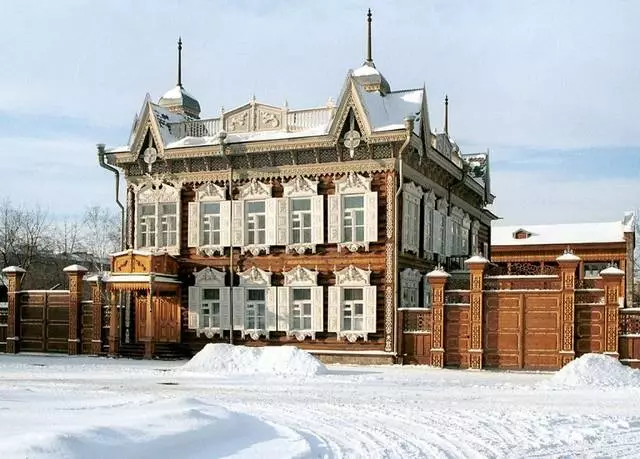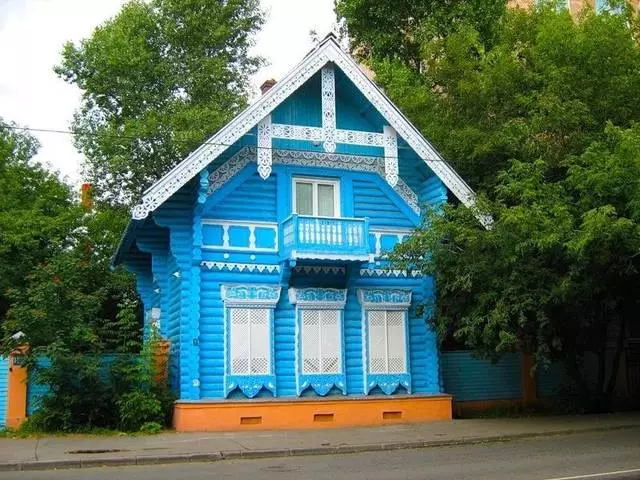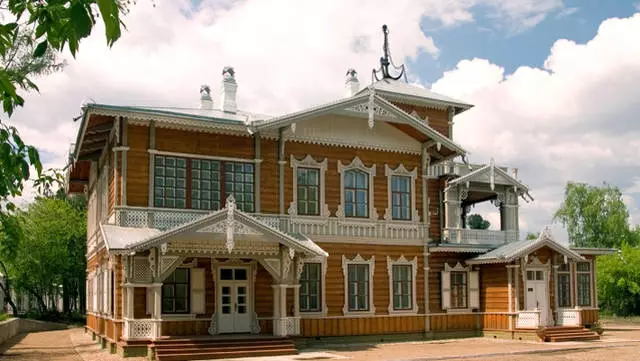Wooden hood is essentially the real symbol of Russia, which can be said without false exaggeration enthusiasts. But even among them there are so bright hips, which should be called real works of art, they are really amazed with their uniqueness and unique beauty.
The most perhaps the famous hut in Russia is located in the Sverdlovsk region - in a small village of Kunar, which is located twenty kilometers from Nevyansk. This is the so-called "gingerbread house", built by Kuznets Sergey Kirillov. This is a truly fabulous terme, which in 1999 was recognized as the best in the contest of the country's wooden architecture. Sergey Kirillov created this beauty with his own hands for thirteen years, and all the external decorations of the gingerbread house were made of metal and wood. Anyone can go to the house and admire it outside and inside, since the Kuznez widow does not lock the gate at all.

"Miracle Teremok" is located in the village of Flena Smolensk region and enters the historical and architectural complex, consisting of four buildings, which previously belonged to a rather famous patronage of Mary Tenishcheva. The carved fabulous tales or the main manor was created on the project of Sergey Malyutin in 1902, and it is considered to be the right masterpiece of Russian small architecture.
"Lace House of Europe" - the former manor of the merchants of Shastin is located in Irkutsk on Engels Street under the twenty-first number. By the way, it is considered one of the business cards of this house. In principle, the house itself was built in the middle of the nineteenth century, but only in 1907 he was decorated with exquisite lace motifs and was called "lace". The most interesting thing is that all the details of the jewelry of this house are elegant patterns of the windows and the facade part, the striking beauty of the turret, curly wooden columns, the complex outlines of the roof, the relief carving of the platbands and are made by him completely unique in its kind. Moreover, all the absolute elements of the house decor were poured solely manually without lecturers or templates.

The Two-storey House of Oshevneva is located in Karelia in the Medvezhiegorsky district on the island of Kizhi and is part of the exhibition of the Wooden Architecture Museum. It was built in the second half of the nineteenth century and very similar to the richly decorated Terem. The house looks very elegant outside - he is breathing with galleries from three sides, on the windows of carved platbands. There are three balconies in the house and all of them are completely different. The decor of its facades is distinguished by an amazing combination of volumetric and propyl thread, and the oval protrusions and rectangular teeth are a characteristic feature of the construction of houses in the area of Zaughnia.
Pogodinskaya Izba is one of the few preserved wooden houses within the city of Moscow. She proudly bangs in Khamovniki in the middle of the stone structure. This unique creation of Russian wooden architecture, built in his best traditions, appeared in this place in 1856. The hut was specially built for the Russian historian Mikhail Petrovich pusher by architect Nikitin.

The bounted roof of this old house decorates a wooden carved pattern - propical thread. Also sophisticated wooden lace decorated with windows, "subzor", "towels" and many other details. The bright blue color of huts in combination with snow-white carved decorations make it look like a terme from an old Russian fairy tale.
Another surprisingly beautiful Russian hut is located in the city of Irkutsk on the street of December events under the number 112. This is the urban uropean Sukachev, built in 1882. It is nice that for all the years that have passed since that period, neither the historical value, nor the beauty of this building has lost their meaning.

This log house with an unusual four-tie roof is richly decorated with propyl carvings - figures of dragons, fantastic stylized images of flowers, bellying of eaves, complex weave fences on the porch and so on. All this testifies not only about the richest fantasy of Siberian craftsmen, but also about the cultural influence of the two neighboring Eastern countries - China and Mongolia.
